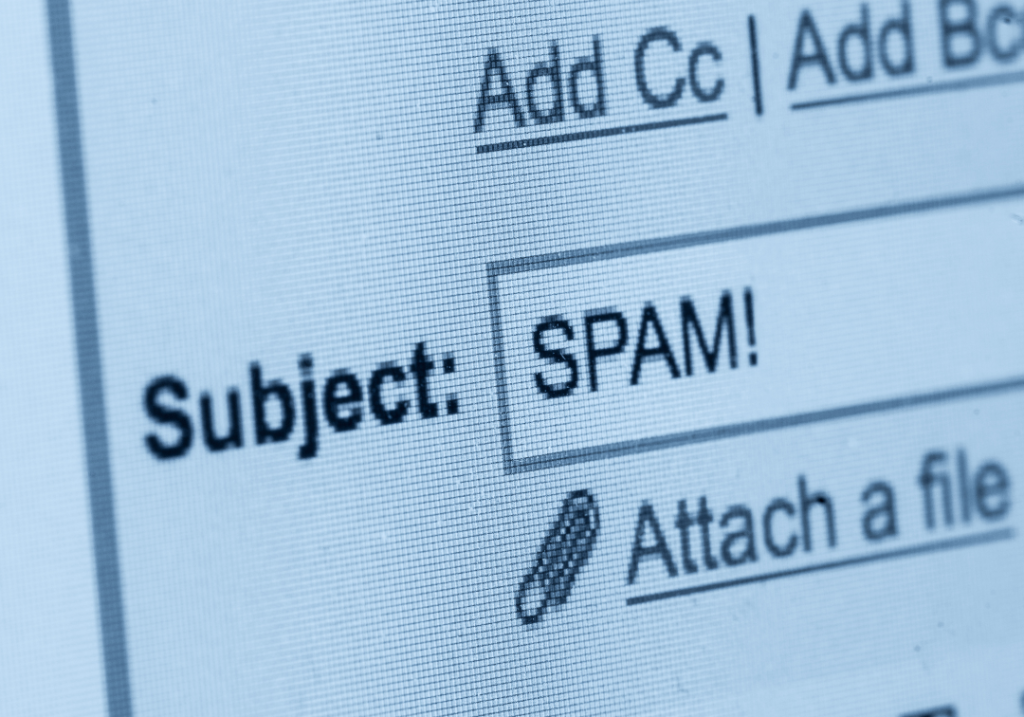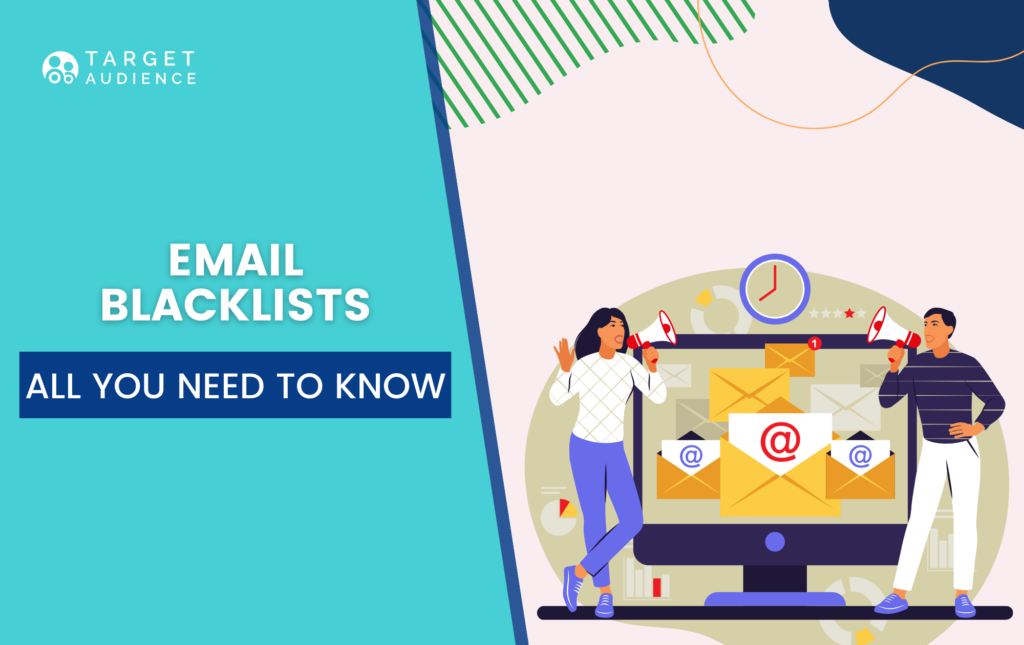You’ve built a substantial mailing list, your subject lines, copy and CTAs keep improving and you’ve even reached a consistent open rate of around 18%. But then one day, despite your best efforts, you see this number plummeting to 5% and it only keeps getting worse.
Getting blacklisted and ending up in the spam folder is the worst-case scenario in email marketing. After all, to maximize open rate and engagement, you must first make sure your emails are being delivered at all.
So how do companies and marketers end up blacklisted, and how can you prevent it from happening to you? Let’s dive in.
What is an email blacklist?
An email blacklist is essentially a real-time record that flags IP addresses or domains known for sending spam emails. Blacklists, which have a few official names like Real-Time Blackhole Lists (RBL) or Domain Name System Blacklists (DNSBL), exist to protect people from an overflow of unwanted spam, and they’re there for a good reason. Spam messages accounted for 45.37 percent of all email traffic in December 2021.
Mailbox providers such as Gmail, Yahoo, and others use these blacklists as a filtering mechanism for detecting and blocking spam emails. Sometimes emails sent from those addresses are directed to spam folders. Other times they are blocked completely and never reach their destination.
How do blacklists actually work?
If you want to get technical about it, here’s how email blacklists work. Every email you send contains a string of digits called the IP address. This address uniquely specifies the sender’s server, meaning you can trace the location of the sender through the IP address. Blacklists are ready to throw up a flag whenever they notice something suspicious about an account. Once they do, they grab the IP data and add it to the list so that sender cannot spread any more spam.
Let’s say Paul is blacklisted and he tries to email John. John’s internet service provider (ISP) checks the IP address against whatever email blacklists this ISP uses. Oops, there’s a match. Paul’s email gets discarded and John never gets the email, or it’s delivered straight to his spam folder.
Not all blacklists are equal. Some RBLs, like Spamhaus and Cloudmark, are very influential and will have a significant impact on your deliverability. Others will have a lesser impact or even zero impact on your deliverability. It’s important to keep track of the bigger RBLs and of course to monitor your email campaign stats for any sharp drop-offs.
How do you get blacklisted?
There are several factors that can harm a sender and tag them as blacklisted, even if they are not a spammer. Here are the most common reasons your perfectly legit emails may be flagged as spam:
- Typos
Avoid manually adding your contacts to your database because it often leads to misspellings and typos in their addresses. You don’t want to send your messages to nonexistent users that bounce and get you blacklisted. - Spam words
Campaigns with content that can come off as spammy or subject lines that appear shady are likely to end up blacklisted. That includes all-caps text and extreme punctuation (???? or !!!!), over-sensualizing or over-promising superlatives, and strangely formatted fonts. - Hidden unsubscribe button
Hiding the unsubscribe button or not having one at all is a bad practice and likely to trigger spam complaints. - High volume of emails
Spammers tend to send a lot of emails, so if you overdo it you are likely to get tagged as suspicious and blacklisted. Another spam indicator is when an IP address has a sudden sharp spike in sent emails.
- Poor email list hygiene
Failing to monitor and clean your mailing list regularly will result in sending lots of emails to inactive addresses. This reflects poorly on your company and will harm your sender’s reputation.
How to find out if your company newsletter is on an email blacklist
There are two types of email blacklists:
Private blacklist: Maintained and circulated by ISPs like Gmail, Yahoo, and Outlook.
Public blacklists: As the name suggests, these blacklists are publicly available and you can check them at no cost.
If you suspect that you’ve been added to a blacklist, there are a few ways to confirm it. The easiest and most common one is to simply use one of the publicly available tools created for this purpose. They’re easy to use and will check your IP address against more than 120 available blacklists. Here are a few common tools to check whether you’ve been added to an email blacklist:
How to Improve email deliverability and avoid blacklists
1. Protect your server from malware and bots
It’s important to make sure that your server is healthy and free of malicious software and bots. These harmful programs can hijack your email domain or IP address, and send bogus emails. The next thing you know, you end up on a blacklist even though you haven’t done anything wrong. You can use an IP lookup tool to assess if someone else is using your IP address.
The easiest way to protect your server is to have a strong security system in place and perform regular anti-malware checks.
2. Use double opt-in or email subscribers
A double opt-in is a two-step verification process. Step one, the user signs up for your mailing list. In step two, an email is sent to the user with a link to confirm their subscription. This security measure will help you make sure only quality contacts enter your mailing list. In other words, by enabling double opt-in, you ensure all of the contacts on your mailing list are real people who are genuinely interested in receiving your marketing emails.

3. Keep a clean email list
As we already mentioned, poor list hygiene is one of the factors that could get you blacklisted. To avoid it you need to regularly clean your mailing list of inactive and invalid email addresses. List cleaning should be performed on a regular basis to keep your list free of spam accounts and disengaged users.
In practice it looks like this:
- Remove bounced email addresses. Make sure you distinguish hard bounces from soft bounces. A hard bounce means there are permanent reasons why the email wasn’t delivered. A soft bounce means there was a temporary issue affecting the email’s delivery.
Differentiating between the two is important so you don’t lose subscribers over temporary issues. You can make this process easier by utilizing marketing automation. - Remove old addresses with weak engagement rates.
- Honor client requests to be removed from your email subscriber list.
To create an efficient list cleaning habit, make sure you come up with a consistent plan, assign a dedicated team member to overlook it, and provide them with the right tools to do so.
4. Use email testing software
There is a variety of tools that can help you keep your list clean and keep your server’s IP address from getting blacklisted. Those include:
- Deliverability checker: It’s a service that screens your emails using spam filters to detect problems like inappropriate content and flag potential problems.
- A/B Testing: A/B testing is never a bad idea. Testing email copy, CTA, subject lines, etc. will help you understand your audience’s preferences and reduce the number of disengaged subscribers.
- Subject line tester: There are several free subject line testers online, that will help you craft more personalized, spam-free subject lines. These testers not only check for spam triggers but also give your subject line an overall grade on how clickable your emails are.
- Email validation tools: These tools help reduce bounces by verifying the email addresses on your list and flagging the suspicious ones.

5. Don’t buy email lists
As you probably know, buying email lists from questionable sources is a big no-no. When you purchase a mailing list from a third-party source, you end up messaging people who never opted in for your campaigns. They will most likely flag your emails as spam, and a high volume of spam complaints will send you straight into a blacklist.
Moreover, some of the addresses on these lists are spam traps. These are email addresses that appear to be real but are not. Their only purpose is to identify spammers and senders who don’t maintain proper list hygiene. Sending a lot of emails to the inboxes of these accounts reflects poorly on your company’s email sourcing practices.
There are plenty of ways to grow your mailing list organically through lead magnets that provide actual value, lead-generating landing pages, and social media campaigns.
How to start over with a clean slate
So you’ve run all the tests and unfortunately, found yourself on a blacklist or two. Don’t panic, it’s reversible. Nearly every major blacklisting company offers ways to remove your IP address from the list. You need to contact the company and follow their instructions. Some will require you to fill out a form and others to write an email describing the issue.
When trying to appeal for removing your IP/domain from a blacklist, it’s important that you provide the RBL with all possible information, including what you did to resolve the situation. Assure them that you’re aware of what caused the listing and that it won’t happen again.
If you’re using an ESP like Moosend of MailChimp, they can usually help you fix the problem as well. However, your account may be suspended until you comply with their demands, such as cleaning up your data.
Final Thoughts
If you’re been in the email marketing game for a while, problems are bound to pop up and you may get blacklisted. As we said, it isn’t the end of the world and it’s absolutely reversible.
Following the steps above will help prevent it from happening, improve the quality of your email campaigns and help you keep a good sender reputation.



